HIGHLIGHTS
PROGRAM UPDATES
WoodWorks and Think Wood Mass Timber Design Manual Now Available Think Wood Digital Film Shares the Promise of Wood in Building a Better Future The AWC’s Assist Paves Way for First CLT Project in Miami-Dade County Think Wood Launches Virtual Mobile Tour The AWC Conducts CLT Connection Tests WoodWorks Leads Efforts to Overcome Mass Timber Insurance Hurdle The AWC Presents CLT Shear Wall Provisions to Seismic ExpertsINDUSTRY NEWS
U.S. Wood-Framed Construction Takes Center Stage in Venice Exhibition Mass Timber’s Sustainability, Performance Appeal to Universities Buoyed by Positive Experience, Developer Ready to Specify Tall Wood Again in Cleveland ConstructConnect Takes Stock of Industry One Year Into Pandemic Six Diverse Projects Showcase Mass Timber’s Versatility Builder Analyzes Buyers’ Motivations and Risks in a Hot Housing Market Top Wellness Trends Among Older Homebuyers Contractor Confidence on the RiseINSIGHTS ON THE COMPETITION
New Steel Framing System for Decks Promises LongevityINDUSTRY RESOUCES
Virginia Tech's Monthly Housing ReportProgram Updates
WoodWorks and Think Wood Mass Timber Design Manual Now Available
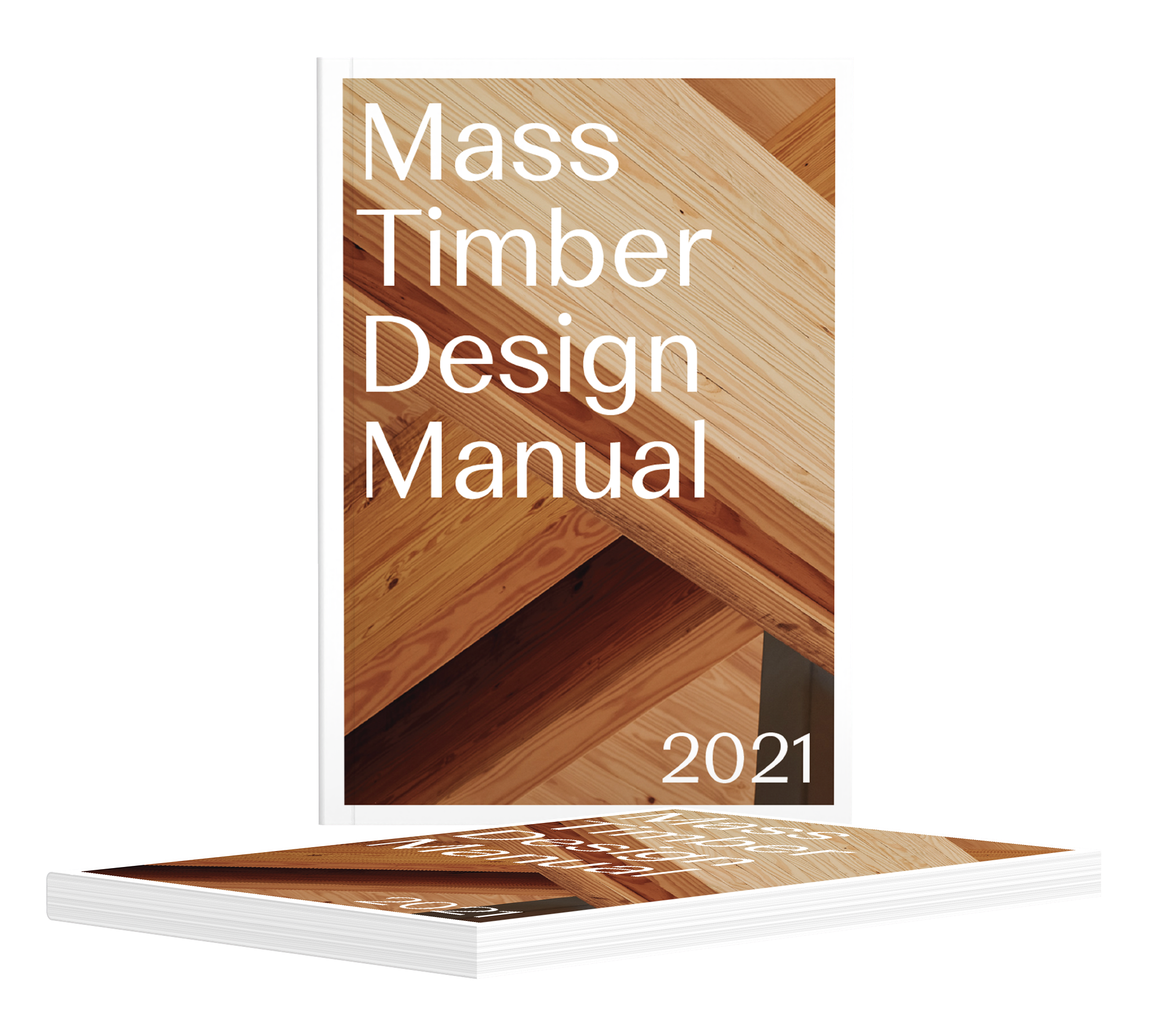
WoodWorks and Think Wood recently launched a new, comprehensive Mass Timber Design Manual, covering the latest mass timber products, advancements in tall wood construction, and best design practices. The free-to-access manual includes Woodworks-published technical papers, Think Wood continuing education articles, insightful Q&As with relevant experts, in-depth project case studies, and technical guides.
The manual was officially launched at the recent International Mass Timber Conference and will be updated annually to continue its status as an invaluable resource into the future.
Read more about the manual here; download your copy today, and share it with your design and construction colleagues.
Think Wood Digital Film Shares the Promise of Wood in Building a Better Future
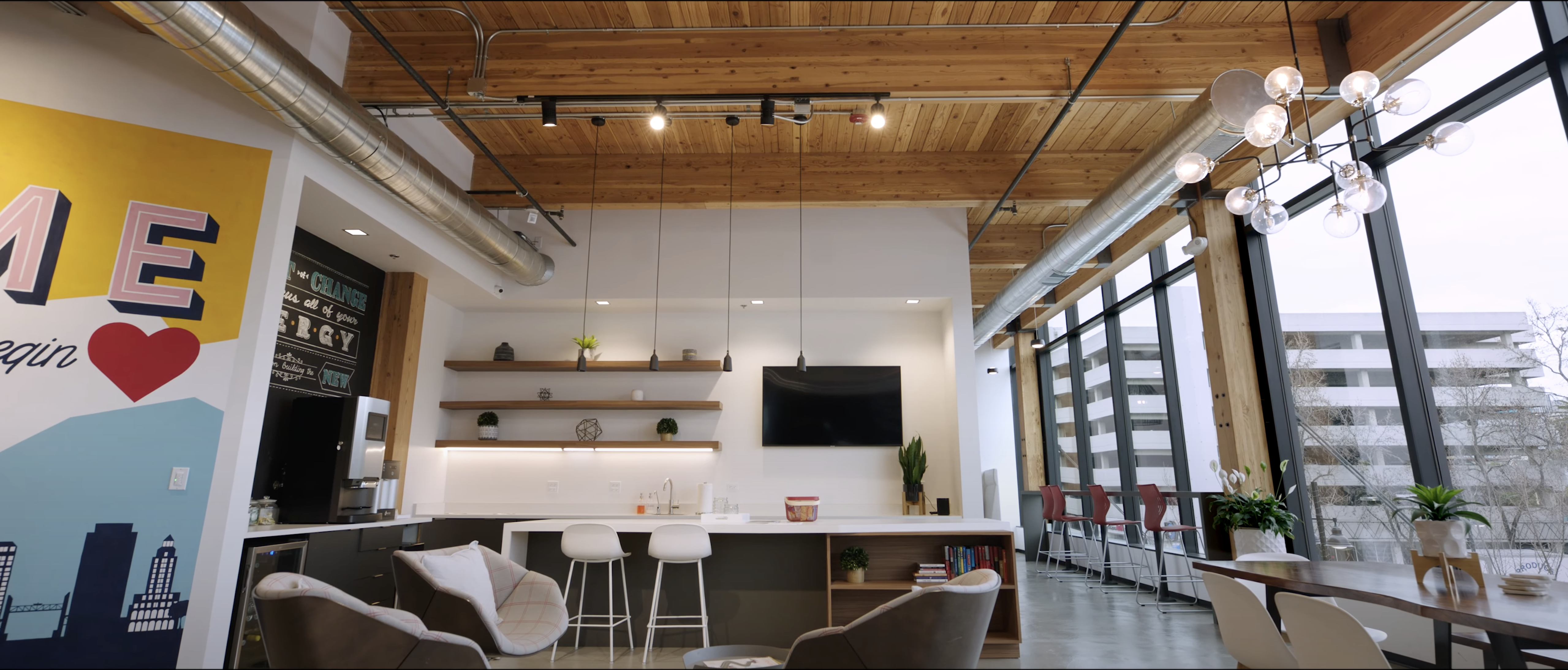
Think Wood commissioned a short video, Legacy, which asks, ‘’If our structures will stand for generations, what do we want them to stand for? Are they merely shelter and workplaces, or could they do more for us?”
Featuring new footage of some of the most notable mass timber buildings in the United States, the video highlights the pivotal role that buildings play in shaping our communities and the health of our planet. Inspirational and focused on the future, it explains wood construction’s carbon benefits as well as the human health and well-being benefits associated with biophilic design.
The video is being promoted on Think Wood’s YouTube channel and serves as a first point-of-contact at conferences, events, and sponsored placements in media outlets.
Watch the video here.
The AWC’s Assist Paves Way for First CLT Project in Miami-Dade County

The American Wood Council (AWC) recently collaborated with WoodWorks and the Engineered Wood Association (APA) to help pave the way for the first cross laminated timber (CLT) building in Miami-Dade County, Florida.
WoodWorks enlisted the AWC’s technical support when the residential project—Grovehaus, which is a collaboration between Atelier Mey and the University of Miami School of Architecture’s Littoral Urbanism Lab—ran into trouble during the approval process. Miami-Dade County maintains its own testing protocols for wood panel products as required by the High Velocity Hurricane Zone requirements in the Florida Building Code, and county officials were not familiar with CLT and its performance compatibility with code. The AWC successfully connected the dots between the required testing protocols for durability with its own testing protocols for durability against water and high wind. The county approved the project, which opens the door for full CLT product approval.
Think Wood Launches Virtual Mobile Tour
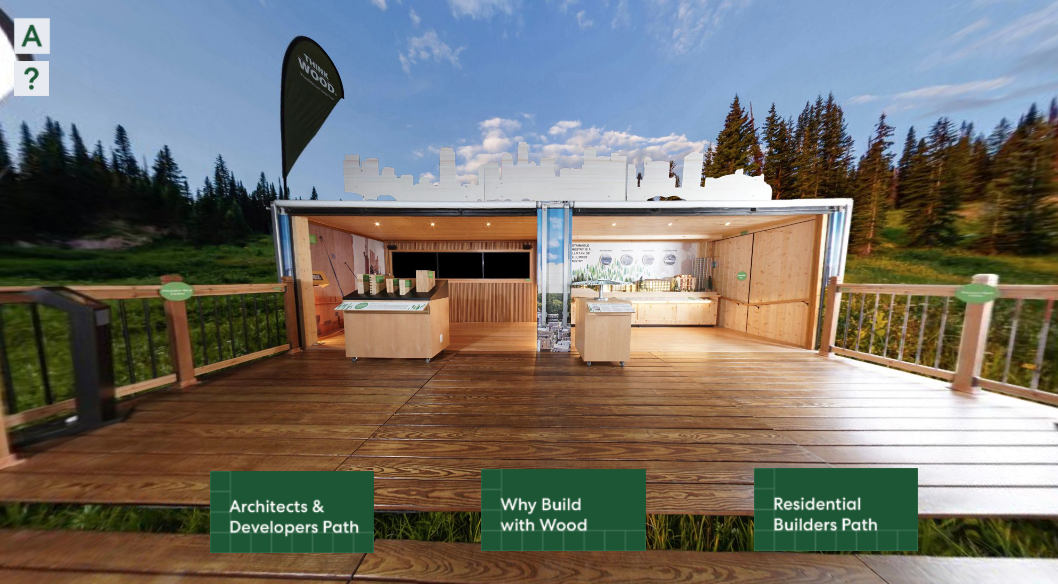
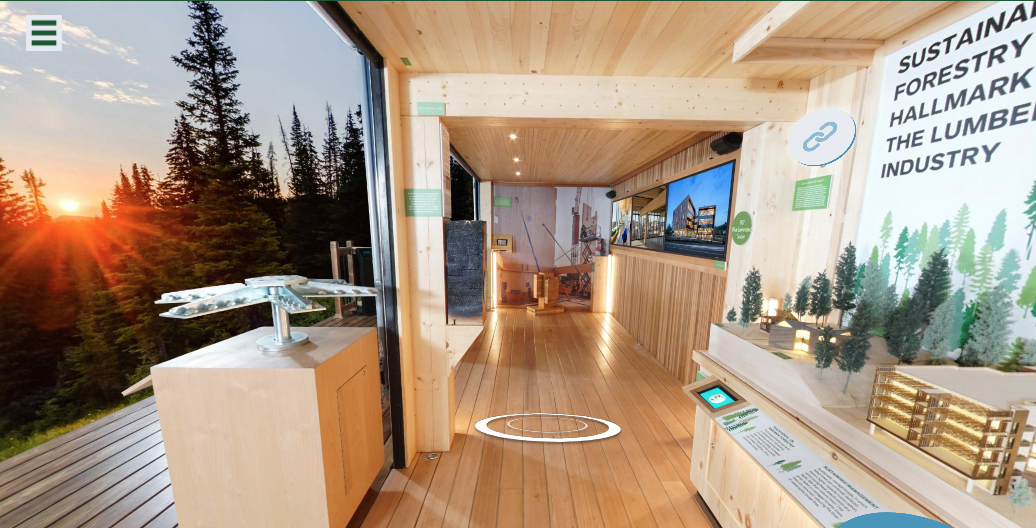
With the pandemic temporarily shuttering the SLB’s Think Wood Mobile Tour, the SLB and Think Wood have launched a new 360-virtual tour to continue to bring the tour’s high-value content and museum-quality exhibits to the design and construction community. Similar to the physical version, the virtual tour showcases softwood lumber products and lumber’s many uses in both commercial and residential construction. With building tour videos courtesy of WoodWorks, product and connection examples, and interactive elements, the exhibit provides an opportunity to experience the story of wood from the forest to the market.
The virtual tour allows for self-navigation, or users can follow three tracks: architect and developer, residential builder, and why build with wood. Topics include sustainability, wood and well-being, mass timber, fire performance, durability and resilient design, and interior and outdoor living appearance products.
Take your tour today at www.thinkwood.com/mobile-tour.
The AWC Conducts CLT Connection Tests
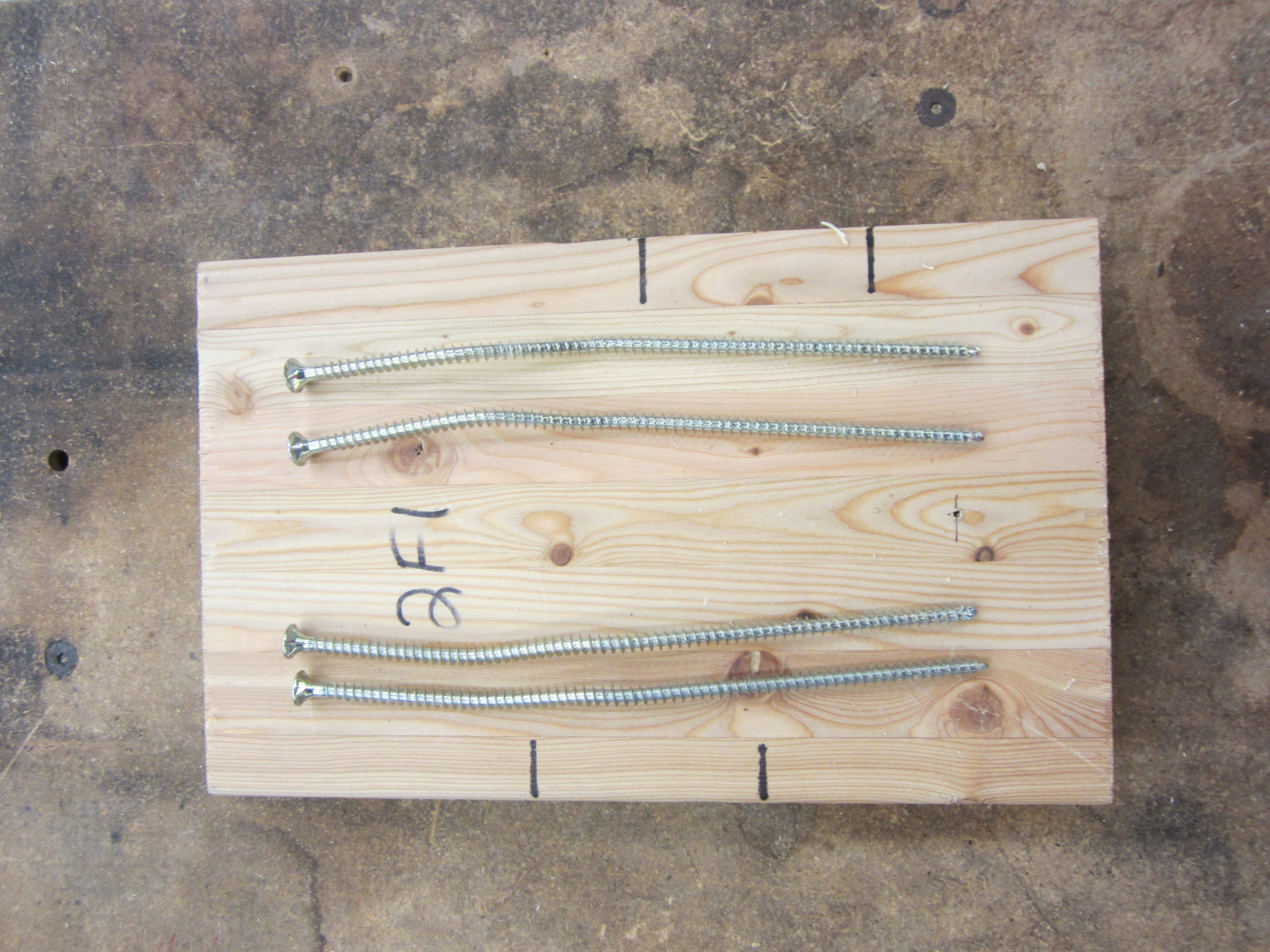
The CLT on each side is connected to the glulam with self-tapping screws (no lead hole in wood required). A post-test photo of screws removed from the connection is featured above.
The AWC recently completed connection testing in support of new criteria for the CLT diaphragm design approach included in the 2021 Special Design Provisions for Wind and Seismic (SDPWS). Conducted at Weyerhaeuser’s laboratory in Federal Way, Washington, the testing augmented the full-scale diaphragm testing that was completed in 2020; it focused on the structural performance of individual connections of the diaphragm. The results indicated that the connections performed better than expected and resulted in higher-than-expected shear capacities of the CLT diaphragms. These results could lead to changes allowing more efficient CLT diaphragm designs. The 2021 SDPWS is referenced in the 2021 International Building Code.
WoodWorks Leads Efforts to Overcome Mass Timber Insurance Hurdle
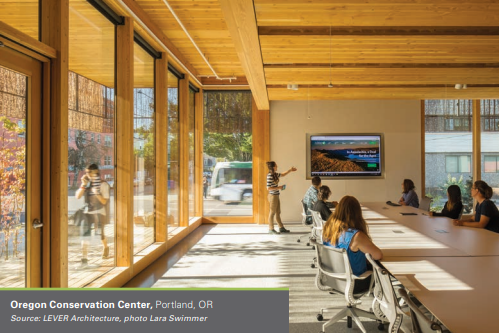
Over the past year, WoodWorks has taken a leading role in educating and providing outreach and technical support to the insurance industry to help them overcome their reluctance to insure mass timber buildings. WoodWorks maintains a dynamic web page targeting insurance professionals, answering common questions, and providing current research and testing related to mass timber’s performance. It published the Insurance for Mass Timber Construction: Assessing Risk and Providing Answers paper, which it authored with an insurance broker experienced with mass timber buildings.
WoodWorks also has developed a presentation for use at conferences and meetings with insurers; is speaking on the issue in webinars and panel discussions attended by insurers as well as building professionals; and is supporting project teams by helping them prepare packages that address project-specific insurance industry concerns.
Although factors such as insurance industry volatility and the lack of historical data create a challenging environment, increasing insurers’ knowledge and familiarity with the performance and safety of mass timber buildings is a critical step toward ultimately overcoming this barrier.
The AWC Presents CLT Shear Wall Provisions to Seismic Experts

Philip Line, PE, Senior Director of Structural Engineering at the American Wood Council
The AWC presented on the CLT shear wall system at the National Institute of Building Sciences (NIBS) Building Seismic Safety Council (BSSC) Symposium in March, which was attended by representatives from FEMA and NIST and others at the forefront of U.S. seismic regulation. The system presented is permissible for broad use, including in high-seismic hazard areas of the United States, and is accepted in the 2020 edition of the NEHRP Recommended Seismic Provisions for New Buildings and Other Structures. CLT shear wall’s inclusion in NEHRP is the first new structural system to be fully adopted for seismic design in 20 years.
Philip Line, PE, the AWC’s Senior Director of Structural Engineering, was also recently recognized with an Excellence Award from NIBS BSSC. This prestigious award is given to those who have distinguished themselves in technical positions and whose efforts have improved building performance, minimized damage from earthquakes, and saved lives.
Industry News
U.S. Wood-Framed Construction Takes Center Stage in Venice Exhibition

The exhibition, AMERICAN FRAMING, will present the architecture of wood framing at the U.S. Pavilion during the 17th International Architecture Exhibition of La Biennale di Venezia. Wood framing is the most common construction system in the United States and is widely regarded as one of the country’s most important contributions to building practice.
Curated by Paul Preissner and Paul Andersen and sponsored by the University of Illinois at Chicago in cooperation with the U.S. Department of State’s Bureau of Educational and Cultural Affairs, AMERICAN FRAMING will feature an immersive, four-story, wood-framed housing structure, replete with wood furnishings, which will remain unclad to showcase the timber frame.
The 17th International Architecture Exhibition will run from May 22 to November 21. Read more about the exhibition here.
Mass Timber’s Sustainability, Performance Appeal to Universities
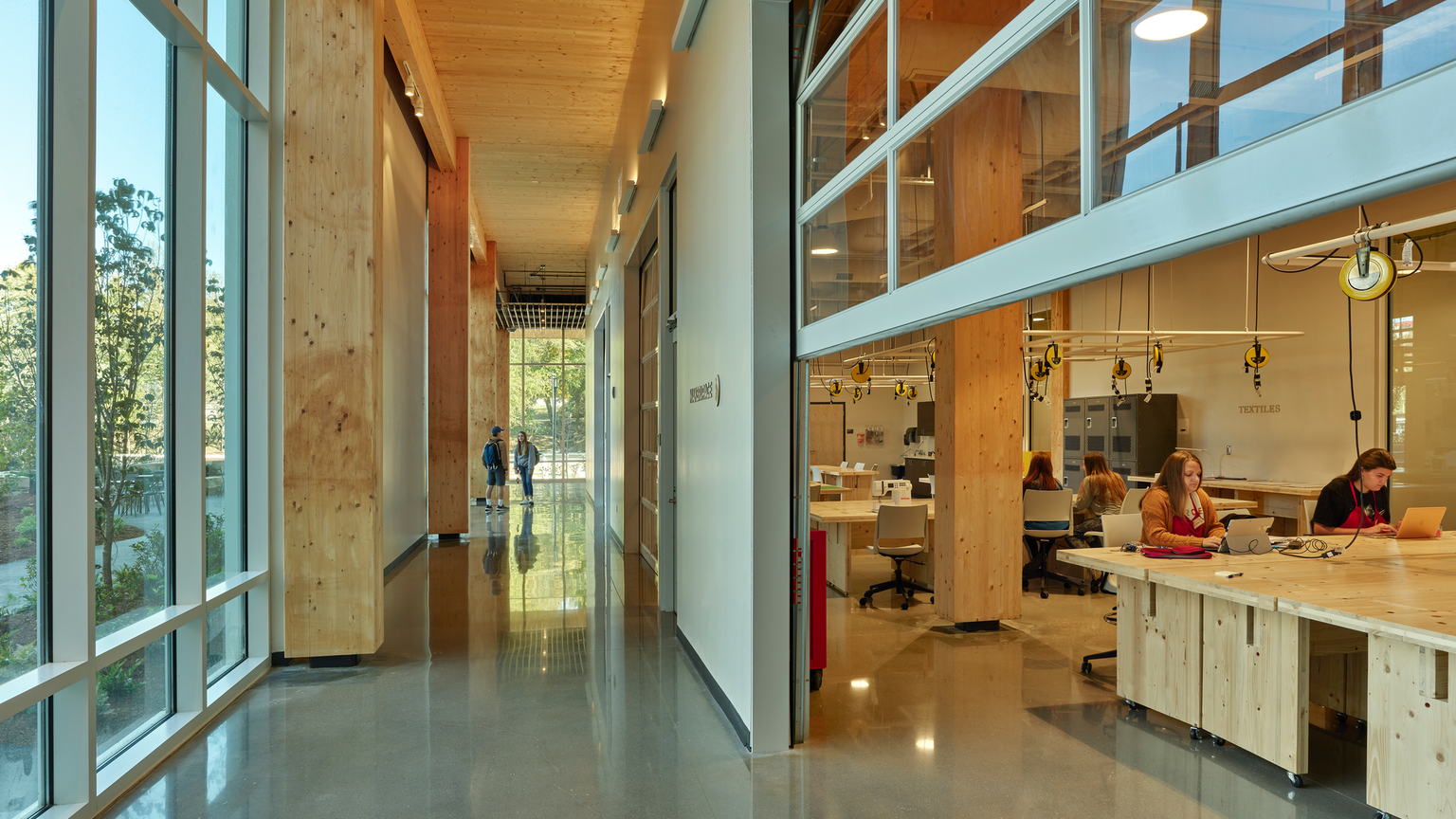
American School & University magazine covered the growing appeal of mass timber on college campuses to help deliver high-quality performance and user experiences while also contributing toward universities’ sustainability goals. The article uses the University of Arkansas in Fayetteville’s Adohi Hall, which was the first large-scale mass timber residence hall in the United States, to showcase mass timber uses and benefits. The article attributes background information on mass timber to the AWC.
Read more here.
Buoyed by Positive Experience, Developer Ready to Specify Tall Wood Again in Cleveland
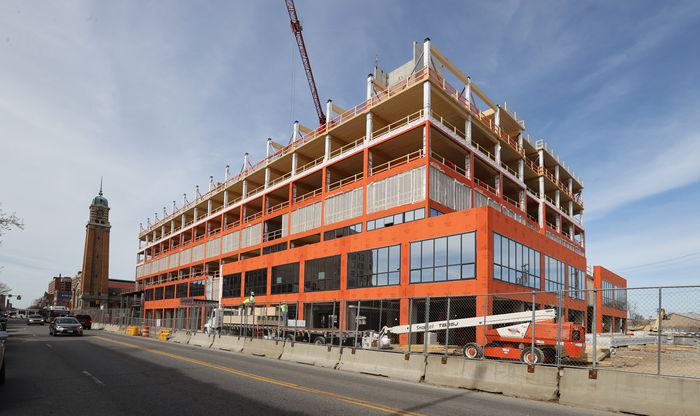
Cleveland.com recently covered the construction progress of Intro, the nine-story, $145 million mass timber apartment building, developed by Harbor Bay Real Estate Advisors LLC and designed by Hartshorne Plunkard Architecture. Intro will briefly hold claim to the distinction of being the tallest mass timber building in the United States once complete. Intro is composed of glue-laminated columns and beams and cross laminated floor panels, and nearly half of its interior surfaces will be exposed structural wood.
Besides the aesthetic and sustainability appeal for future occupants, the team at Harbor Bay is also thrilled at the ease of construction, with Intro being erected 25% faster than typical concrete or steel construction. The team is so pleased that it is already envisioning an even taller mass timber structure at a sister site next door to Intro.
Read more about Intro’s progress here.
ConstructConnect Takes Stock of Industry One Year Into Pandemic
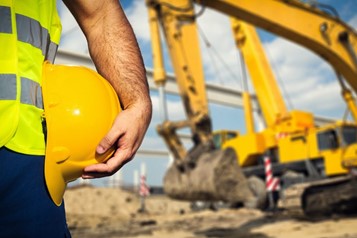
Now with a full year of data in hand, ConstructConnect analyzed the pandemic’s impact on the construction industry and where it stands now. Construction’s widespread designation as an essential activity buffered many elements of the sector from severe fallout, and, indeed, despite the pandemic, total construction spending increased in 2020, up 4.8% from 2019. The increase in construction spending was largely attributed to an almost 12% increase in residential construction. On the other hand, non-residential construction dropped 0.04% in 2020, as developers stalled plans for hotels, offices, and other commercial construction projects. Construction spending in 2021 is already off to a good start.
Construction starts did not fare as well as put-in-place spending, with non-residential starts declining 27% compared with 2019. These have yet to show any signs of rebounding, with, for example, February 2021 non-residential starts down 34.6% from January 2021 and 38.5% from February 2020.
Both construction employment and architectural billings saw sizable declines because of the pandemic, but both are rebounding.
Read more about these trends here.
Six Diverse Projects Showcase Mass Timber’s Versatility
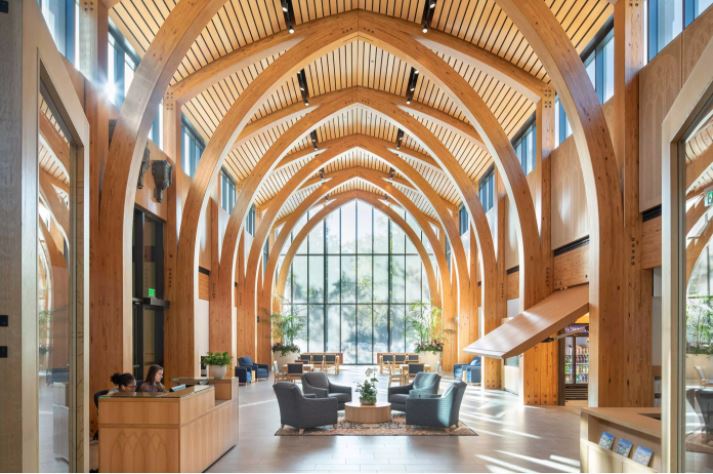
The Architect’s Newspaper recently cited six completed mass timber projects as ideal case studies demonstrating the versatility of mass timber products. The case studies—which include two university facilities, a school, a hotel, a brewery and office space combo, and a home—feature an array of mass timber applications, including framing, flooring, cladding, fasteners, and beautiful finishes. Together these projects portend the possibilities of building with wood.
View the six case studies here.
Builder Analyzes Buyers’ Motivations and Risks in a Hot Housing Market
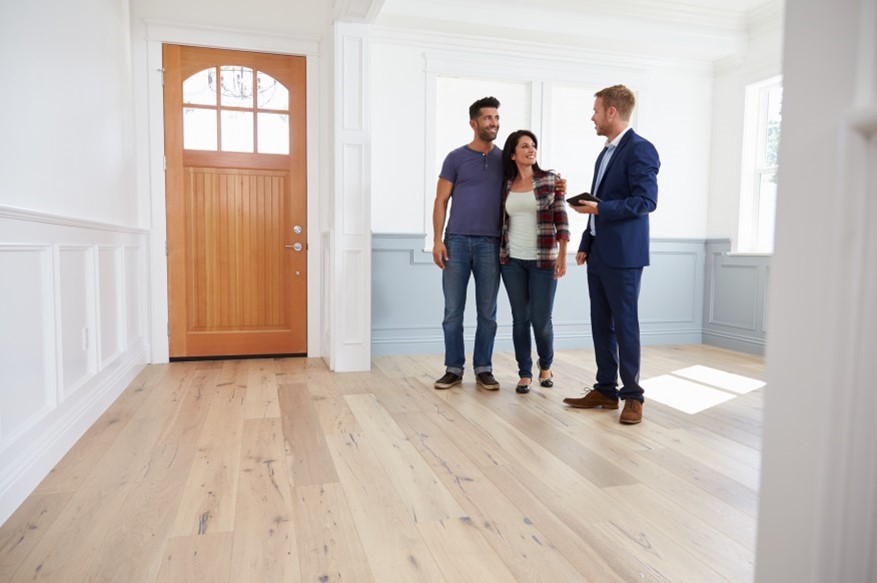
Builder recently looked at the motivations and risks behind today’s seven main homebuying groups, which include first-time buyers, move-ups, retirees, luxury buyers, investors, and those relocating or looking for a second home. Across groups, buyers are active in the market and are motivated by rising prices, historically low interest rates, pandemic-induced savings and lifestyle changes, and the psychological effect of “fear of missing out.”
Collective momentum from these factors has pushed home sales to their highest levels in 15 years.
Read Builder’s analysis for each homebuying group here.
Top Wellness Trends Among Older Homebuyers
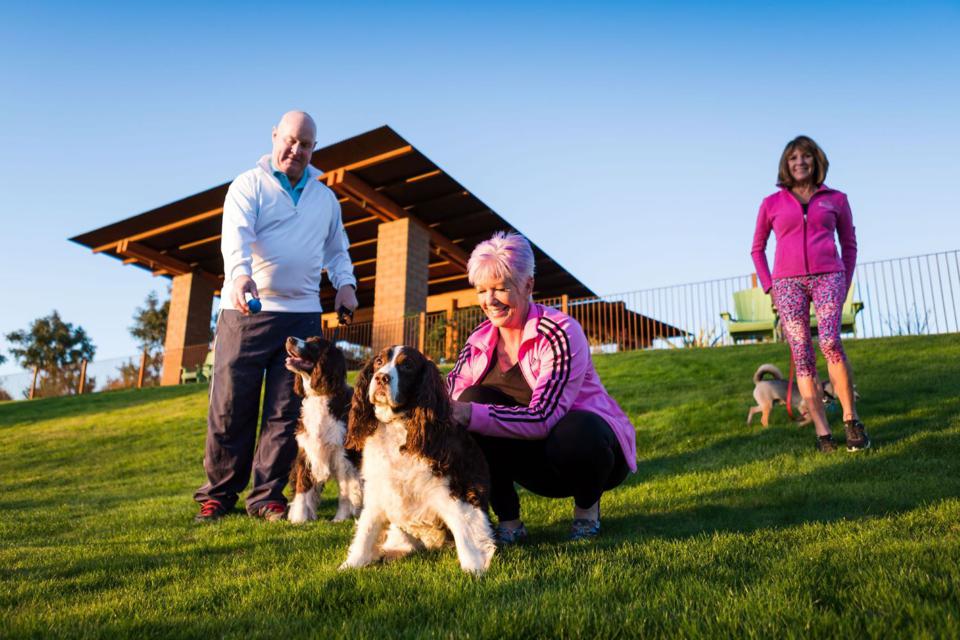
Forbes recently published a list of the top six wellness-related trends influencing the homebuying preferences of Americans age 55 and older. The list includes accessory dwelling units; multigenerational housing, be it via larger new homes or senior enclaves in master planned communities; outdoor living spaces; wellness amenities inside both one’s home and one’s community; and housing that offers the opportunity to age in place. Not surprising, these trends are heavily influenced by and rooted in the pandemic experience, which is prompting many older buyers to re-evaluate their preferences.
Read more here.
Contractor Confidence on the Rise
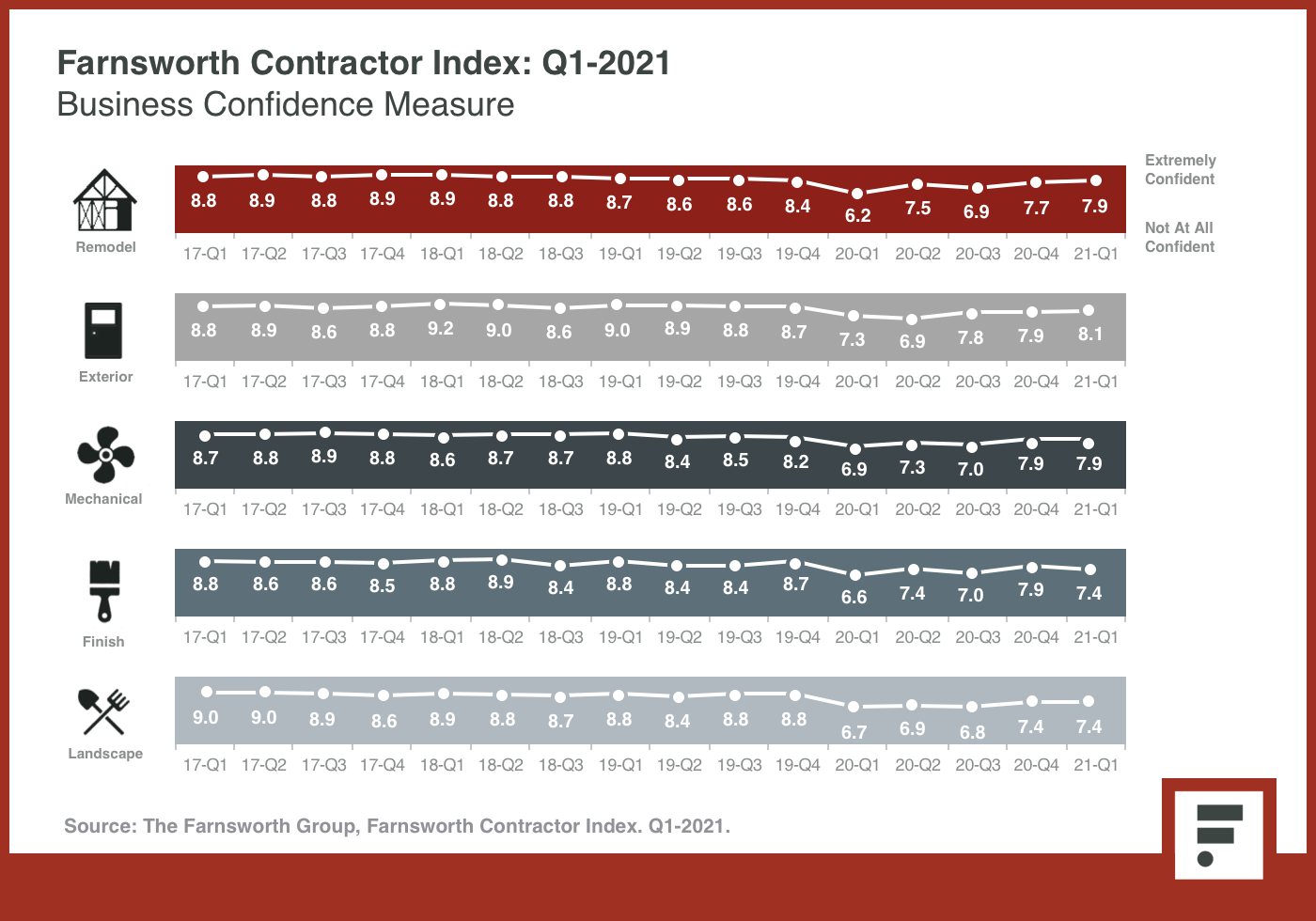
According to the Farnsworth Group’s latest quarterly Contractor Index, contractors are the most confident they have been in over a year, though still not at pre-pandemic levels. Remodeling contractors posted the largest year-over-year increase in project activity, but across their contractor segments, lead volume, quality of leads, and ability to close leads are strong and, in many cases, better than pre-pandemic levels.
Read more here.
Insights on the Competition
New Steel Framing System for Decks Promises Longevity
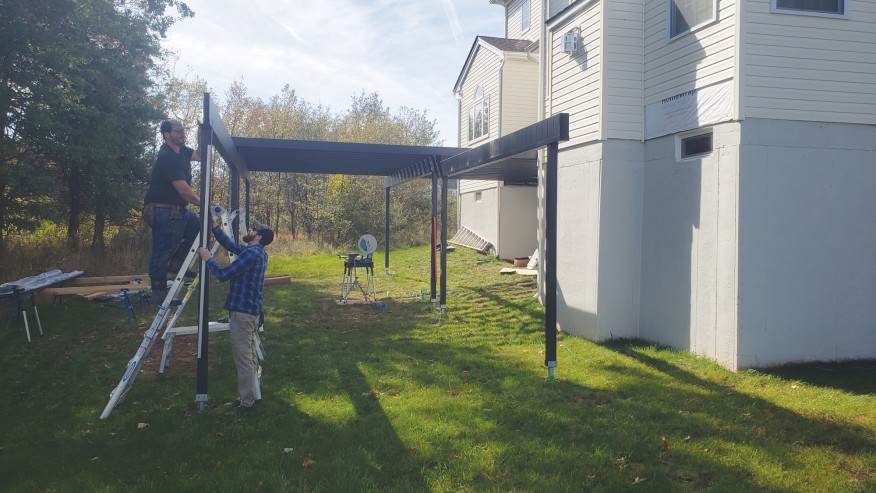
The Journal of Light Construction recently recounted a New Jersey–based remodeling contractor’s experience using the Fortress Evolution steel framing system for decking instead of light-gauge steel or pressure-treated lumber. Fortress Evolution framing features powder-coated galvanized steel and carries a 25-year limited warranty. Based on the contractor’s estimates and today’s price of wood, the cost of Fortress Evolution framing would be a little less than double the cost of using pressure-treated lumber. However, Fortress Evolution’s promised longevity, lack of maintenance, and warranty made it the right choice to pair with composite decking and make it easier to upsell premium decking products.
Read more about the product here.
Industry Resources
Virginia Tech's Monthly Housing Report
This monthly housing commentary report is a free service of Virginia Tech and is intended to help one gauge future business activity in the U.S. housing market.
February 2021 Reports (released in April 2021)
Part A: February Housing Commentary
Part B: February Economic Conditions


